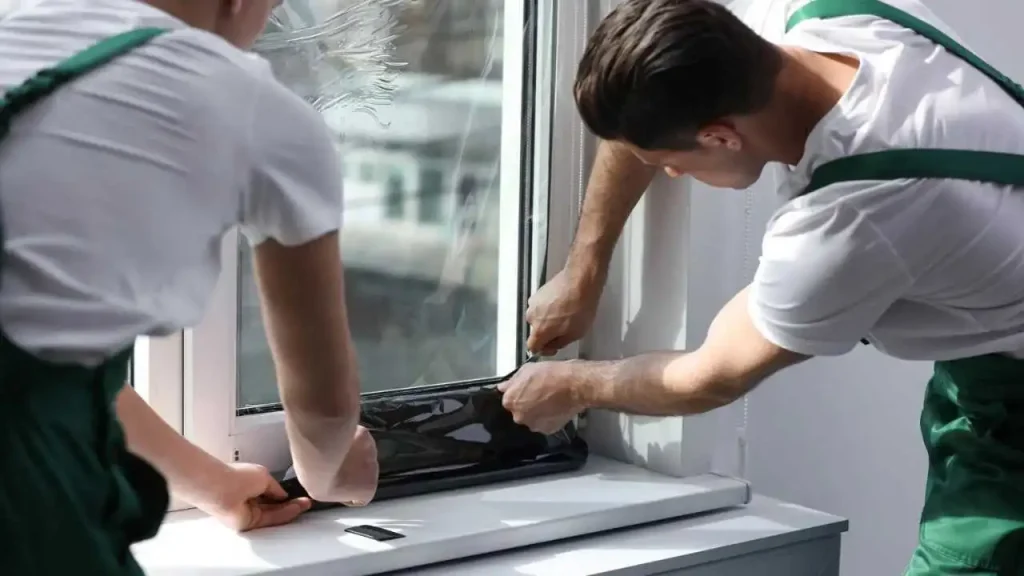
Tinted windows offer both style and practicality – they protect you and your car’s interior from harsh UV rays while adding a touch of privacy. However, it’s crucial to be aware of your state’s window tint regulations, as excessively dark tints can reduce visibility at night.
Let’s dive into the details of window tint percentages! We’ll cover the different options, how they impact UV protection, privacy, and visibility, helping you make the best decision for your car.
What Does Window Tint Percentage Mean?
You’ve seen cars with tinted windows, but when it comes to choosing a tint for your own vehicle, those percentages can get confusing. What exactly do they mean?
Simply put, the window tint percentage tells you how much visible light the tint will let through. A 50% tint means half the light gets through, while a 5% tint blocks 95% of the light.
Understanding Common Car Tint Percentages
When choosing a window tint, you’ll encounter a range of percentages. These percentages refer to the amount of visible light the tint allows to pass through (also known as Visible Light Transmission or VLT).
Important Note: Legal tint percentages vary by state. Be sure to research your local laws before making a selection.
Let’s Explore Some Popular Tint Percentages for Front, Rear, and Back Windows:
70% Tint
A 70% tint is a popular choice, often found as the factory tint on many cars. While it doesn’t offer significant privacy (windows still appear mostly clear), it provides several key benefits:
- UV Protection: Blocks a substantial portion of harmful UV rays, protecting you and your car’s interior.
- Heat Reduction: Helps keep your car cooler than untinted windows, improving comfort.
- Visual Clarity: Maintains excellent visibility for both driver and passengers.
In short, a 70% tint is a practical and subtle upgrade that enhances comfort and protection without sacrificing visibility.
50% Tint
A 50% tint strikes a great balance between protection and visibility. Here’s why it’s a popular option:
- Excellent UV Defense: Blocks a significant amount of harmful UV rays, safeguarding you and your car’s interior.
- Reduced Glare: Minimizes glare from headlights and sunlight, improving driving comfort.
- Maintains Visibility: Provides clear outward vision day and night.
- Moderate Privacy: Offers a slight increase in privacy compared to clear windows, but doesn’t provide full obscurity.
35% Tint
A 35% tint delivers a noticeable upgrade in your car’s appearance, adding a touch of sleekness. But it’s not just about looks; here’s what you get:
- Enhanced Privacy: While not completely opaque, it offers a greater degree of privacy compared to lighter tints.
- Strong UV Protection: Blocks a significant amount of harmful UV rays, protecting your skin and your car’s interior.
- Legal in Many Areas: Often meets the minimum legal VLT requirement in several states.
- Maintains Good Visibility: Provides sufficient visibility for safe driving.
If you’re looking for a stylish upgrade that balances privacy, protection, and visibility, a 35% tint is a solid choice.
20% Tint
A 20% tint transforms your windows, offering a high level of privacy. It significantly obscures the view into your car, shielding you and your belongings from prying eyes. Additionally, these benefits come along:
- Superior UV Protection: Blocks a substantial amount of harmful UV rays.
- Sleek Appearance: Adds a touch of mystery to your vehicle’s look.
Important Note: Reduced visibility, especially at night, is a consideration with 20% tint. Ensure you’re comfortable with the visibility trade-off before making this choice.
15% Tint
From the outside, 15% and 20% tints look very similar. However, that slight difference gives your car a slightly bolder, darker appearance. If you crave that sleek, tinted look but your state restricts extremely dark “limo tints,” 15% could be the perfect compromise.
5% Tint (Limo Tint):
The name says it all! 5% tint, often referred to as “limo tint,” is designed for maximum privacy. It blocks a massive 95% of incoming light, making it extremely difficult to see inside the vehicle. If shielding yourself from prying eyes is a top priority, this is the ultimate option.
Choosing Your Ideal Tint
Choosing the right window tint percentage means balancing your desired level of UV protection, privacy, and visibility with your state’s regulations. Consider your climate, how much privacy you value, the importance of maintaining clear vision (especially at night), and the overall look you want to achieve for your car. Always research your local laws to ensure you make a stylish, safe, and legal choice that enhances your driving experience.
